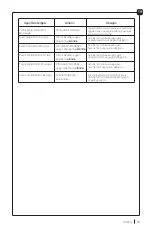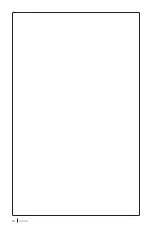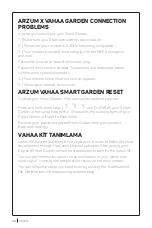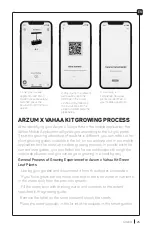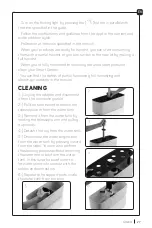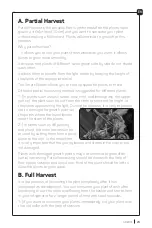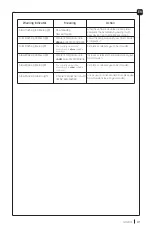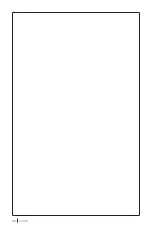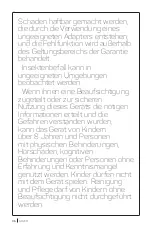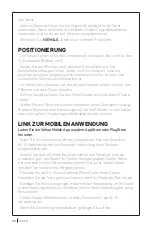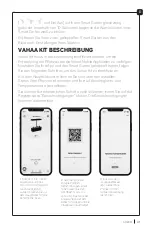
29
ARZUM
A. Partial Harvest
Partial Harvest is the process that is performed after the plants have
grown a little (at least 10 cm) and you want to consume your plant
without making a full harvest. Plants will continue to grow after this
process.
Why partial harvest?
- It allows you to use your plants fresh whenever you want. It allows
plants to grow more smoothly.
It ensures that plants of different sizes grown side by side do not shade
each other.
It allows them to benefit from the light better by keeping the height of
the plants at the appropriate level.
The Smart Garden allows you to free up space for plants to thrive.
Different partial harvesting method is suggested for different plants:
1-) In plants such as basil, sweet basil, mint, and lemongrass, the upper
parts of the plants can be cut from the stem to shorten the height of
the plants approaching the light. During this process, it is very important
not to damage the growth points at
the points where the lower leaves
meet the stem of the plants.
2-) In plants such as dill, parsley
and chard, the outer leaves can be
pruned by cutting them from a point
close to the root. In the meantime,
it is very important that the young leaves and stems in the interior are
not damaged.
Plants with damaged growth points may not continue to grow after
partial harvesting. Partial harvesting should be done with the help of
fine-tipped scissors and about one-third of the plant should be left to
allow the plants to grow again.
B. Full Harvest
It is the process of harvesting the plant completely after it has
completed its development. You can consume your plants fresh after
harvesting or cut the roots overflowing from the basket and store them
in your refrigerator for a longer period of time with seed capsules.
1-) If you want to consume your plants immediately, cut your plant over
the root collar with the help of scissors.
EN

